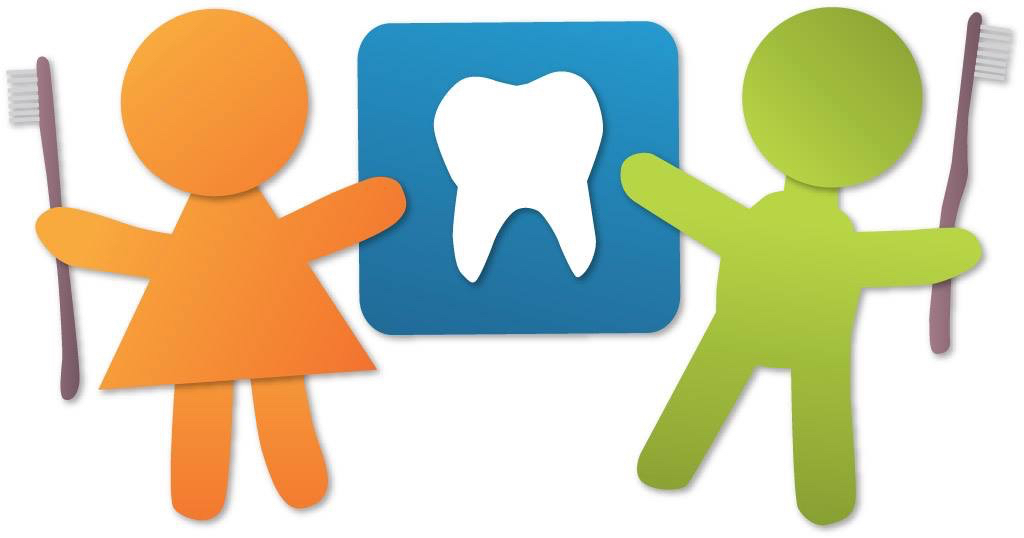How does fluoride help my child's teeth?
Cavities were once a fact of life. Now, with fluoride, this has changed dramatically, and it is possible for your child to grow up without cavities. Fluoride is a natural element that is safe and effective when used appropriately. Unfortunately, many people continue to be misinformed about fluoride and fluoridation.
When used correctly, fluoride is very effective in preventing and even reversing the early signs of dental decay. It works in several ways, including making your child's teeth stronger against acid attacks, repairing damaged tooth structure, and affecting the actual bacteria that cause cavities.
Fluoride is obtained in two forms: topical and systemic
At our dental office during a cleaning and everyday at home while brushing with a fluoridated toothpaste, fluoride is topically applied to your child's teeth. This makes your child's teeth stronger and more cavity resistant by strengthening the enamel surface. Toothpastes, fluoride rinses, and in-office applications all work together to prevent dental disease.
Systemic fluoride works at the cellular level. As your child is growing, tablets or droplets can be used to incorporate fluoride into the tooth structure. Taken as a tablet, or in water, fluoride makes the crystals of your child's teeth grow stronger.
The most important thing regarding fluoride treatment is the proper dosage!
Too little fluoride will not be able to help your child's teeth become cavity resistant. On the other hand, too much fluoride in preschool children can lead to dental fluorosis, discoloration and damage to your child's teeth, during development. In this situation, your child's permanent teeth will have a chalky white to brown appearance.
Many children often get more fluoride than their parents realize. Being aware of your child's potential sources of fluoride can help you prevent the possibility of dental fluorosis. Some of these sources of fluoride are:
- too much fluoridated toothpaste at an early age
- the inappropriate use of fluoride supplements
- school fluoridation programs
- hidden sources of fluoride in your child's diet such as fruit juices and infant formulas
To decrease the risk of dental fluorosis, the following steps can be taken:
- use baby cleanser (toothpaste without fluoride) for infants and very young children up to age 2 - place only a pea-sized amount of toothpaste on the brush
- account for all of the sources of ingested fluoride before requesting fluoride supplements from your child's pediatrician or pediatric dentist
- obtain fluoride-level test results for your home drinking water before giving fluoride supplements to your child (check with local water utilities - San Francisco Municipal Water District is fluoridated)
- 2 and 3-year olds may not be able to expectorate (spit out) fluoride-containing toothpaste when brushing. As a result, these youngsters may ingest an excessive amount of fluoride during tooth brushing. Toothpaste ingestion during this critical period of permanent tooth development is the greatest risk factor in the development of fluorosis
- Excessive and inappropriate intake of fluoride supplements may also contribute to fluorosis
- Fluoride drops and tablets, as well as fluoride fortified vitamins, should not be given to infants younger than six months of age. After that time, fluoride supplements should only be given to your child after all the sources of ingested fluoride have been accounted for and upon the recommendation of your child's pediatrician or pediatric dentist
- Certain foods contain high levels of fluoride, especially powdered, concentrated infant formula, soy-based infant formula, infant dry cereals, creamed spinach, and infant chicken products. Some beverages also contain high levels of fluoride, especially decaffeinated teas, white grape juices, and juice drinks and soda drinks manufactured in fluoridated cities
- Fluoride in the water supply decreases by 30% the chance of your child getting cavities.
If fluoride is not in your water supply (San Francisco Municipal Water District is fluoridated), our office will be able to prescribe it. The dosage changes at 3 years old, again at 6 years old, and should be taken daily until 10-12 years of age. If you have a water filtration system or use a lot of bottled water, your child may not be receiving an adequate amount of fluoride and will be more prone to getting cavities. - Bottled water with fluoride is available for your very young child
- Arrowhead Water is one example of fluoridated bottled water
- We recommend a fluoride product such as Colgate Phos-Flur Rinse or Johnson & Johnson ACT Rinse to help prevent cavities, especially if your older child is wearing braces
Doctor Wang, Doctor Perea-Corkish, Doctor Gerodias and the other Doctors of Discovery Pediatric Dentistry make no warranties, expressed or implied, as to any results to be obtained from use of the information on this page. We cannot diagnose or treat patients over the Internet. Information on this site is for educational purposes only. You should not rely on this information as a substitute for personal, medical, and/or dental attention or diagnosis. Without all available information about a patient, it is impossible to make a diagnosis. Help and answers are in the form of general ideas. Only you, your dentist, and other necessary and qualified health care providers can make an appropriate treatment decision in an emergency or for everyday care and dental treatment.
